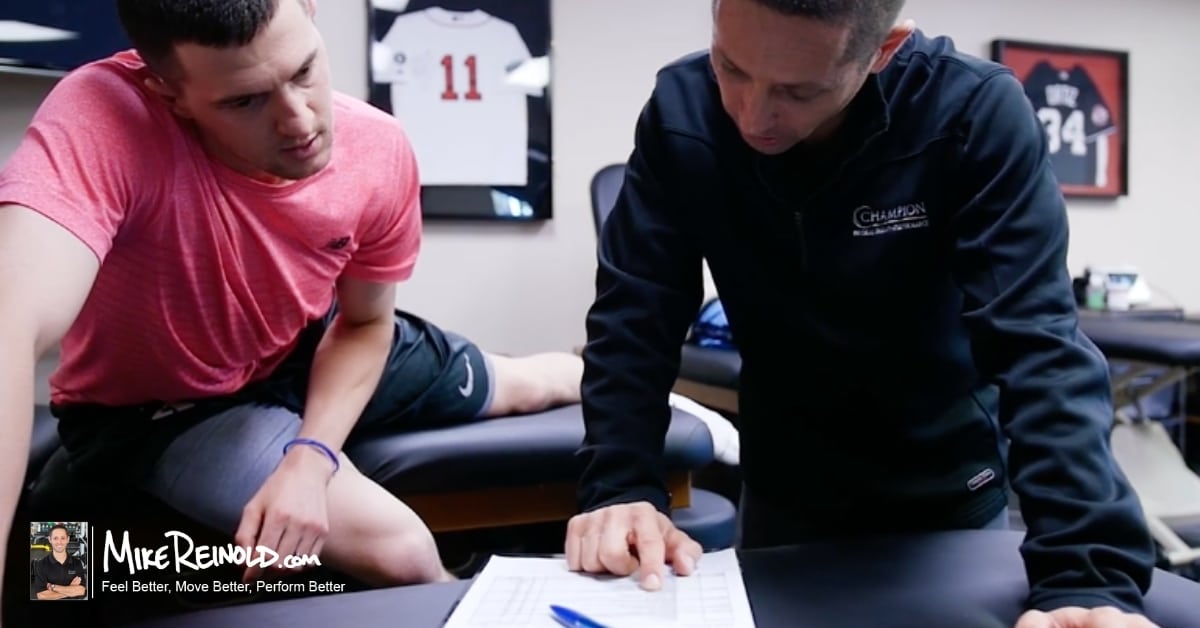
Not everything below is rocket science, and I have been thinking about these for several years, but here are few small trains of thought I’ve had over the last year.
1. Asymmetry Might Not Always Be a Bad Thing
I have been preaching this a bunch lately, but I have openly questioned if we could really achieve symmetry, and if we could would we want to. Everyone is jumping on this bandwagon lately and just like anything else, we are probably getting a little to dramatic with this and overanalyzing to an extent. Let me explain.

I first noticed this when I started to explore some of the hypothesized that have been proposed in regard to scapular dyskinesis and contralateral hip rotation in overhead athletes.
The two common theories in regard to postural imbalances and causative factors with injury are that the scapula is more depressed (well actually it is upwardly rotated, anteriorly tiled, and protracted, as shown in my article here, but we’ll simplify it and call it “depressed”) and that the contralateral hip is more internally rotated. Both have been deemed “disadvantageous” and have been speculated to but athletes at risk for future injury.
I have 2 main issues with these statements, but make no mistake I am not refuting them, I am just questioning them. First, these hypotheses have come from people observing injured athletes and making assumptions that what they see must then be pathological. Second, when you look deep into the subject matter, the right scapula may be more depressed and the left hip may be more internally rotated in both right handed AND left handed overhead athletes! I don’t have definitive data on this (yet) but have noticed this potential trend. Obviously we see far more righties and lefties so, we assume. This isn’t new information and the Postural Restoration Institute has some interesting info on why this occurs if you want to dig deeper.
Of course, huge asymmetries are undesirable, but realistically some asymmetries are going to happen when performing a unilateral sport or activity everyday, and these asymmetries are probably even desirable. Food for thought.
What can you do to get better?
- Know the unique demands of the activities that your patient/client participates in.
- ASSESS, DON’T ASSUME – pretty simple
2. The Upper Trap can Wreak Havoc on Shoulder Function

So a goal of mine before I start any strengthening or advanced exercises with everyone is to re-educate them to not be “upper trap dominant.” It actually isn’t that difficult but is often overlooked. It is very similar to what Gray Cook says about restoring normal movement patterns, it seems like the motor pattern is still in our system somewhere, we just have to bring it back out. Like riding a bike, you never forget.
What can you do to get better?
- Before you try to enhance lower trap and serratus function, fix the upper trap motor pattern, otherwise you’ll be spinning your wheels.
3. Online Education Continues to Grow

People are catching up, it took me WAY TOO LONG, but my online eval and treat of the shoulder program was just recently approved for CEU credit by the NSCA and APTA and I’m still waiting to here from the NATA This learning experience is still growing and becoming excepted but we are getting there.
What can you do to get better?
If you haven’t gotten into any of these online programs and webinars, you are missing out. I highly recommend you do and see how much you can pick up by participating in small bouts of clinical development more frequently in comparison to sitting in a hotel conference room for an entire weekend and zoning out.
Don’t get me wrong, there will always be a place for live and hands on learning, but online is going to continue to grow in addition to this. I hope that very shortly live seminars will be at least 95% hands on and that lecture based seminars will be much more effective online.
4. Attitude is Often Your Most Important Quality

What can you do to get better?
Alright, I’ll stop on that note and just direct you to the great John Maxwell and his book The Difference Maker (it is under $3 currently on Amazon).
Would love to hear from others on what they learned in 2010! Please reply and Happy Holidays!




